Casa Vicens is a magnificent Antoni Gaudi creation located in Barcelona’s Gràcia neighborhood.
The vivacious Casa Vicens splashed onto the Gaudi tourist circuit in Barcelona in November 2017.
It opened flamboyant doors to the public after 130 years of private ownership and a massive renovation. It’s an intense burst of exotic color.
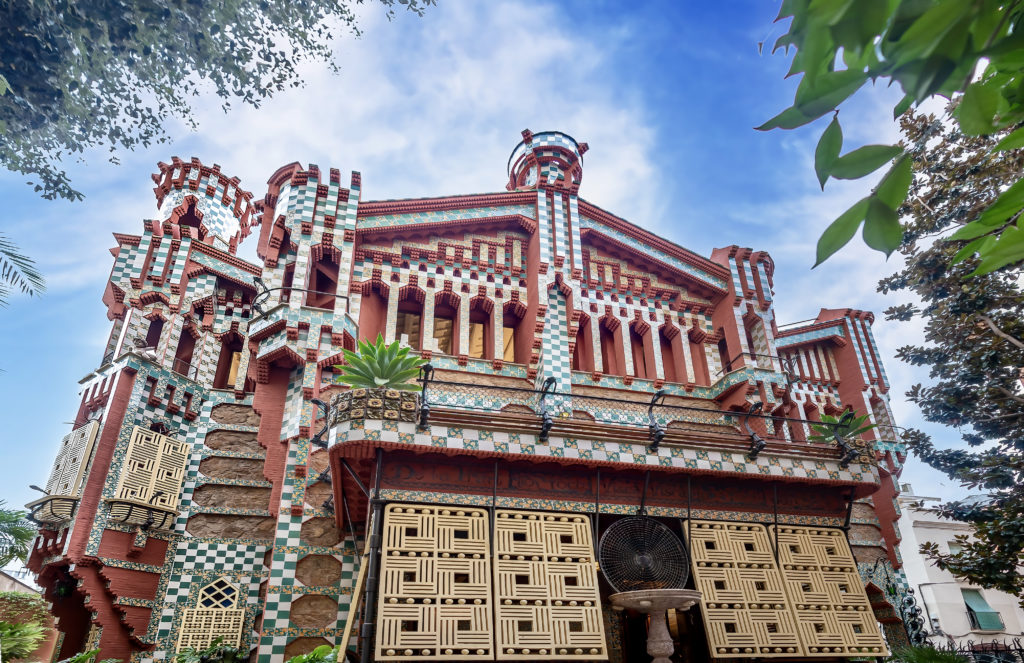
Casa Vicens is a must visit attraction in Barcelona for those who love architecture and all things Antoni Gaudí.
Even if you don’t love architecture, you’ll be hypnotized by the showy building. I wanted to move right in straight away.
Casa Vicens is likely like nothing you’ve ever seen before. And it’s one of Barcelona’s gloriously off the radar hidden gems because it’s still fairly new.
But it won’t be that way for long, I’m sure. And was even surprisingly well liked when I visited in March.
In this guide to Casa Vicens, I give you an overview of the casa, tell you everything to see inside, and provide tips for visiting.
Quick Tips:
- there are three separate spots to buy a ticket, check your bag, and enter
- in high season, I would definitely buy a skip the line ticket
- If you are coming from Eixample, I recommend heading towards Passeig de Gràcia, which directly leads into Gran de Gràcia. It’s a street lined with gorgeous architecture.
The floor plan is as follows:
- ground floor entrance and gorgeous rooms
- first floor temporary exhibitions
- second floor permanent exhibitions
- rooftop
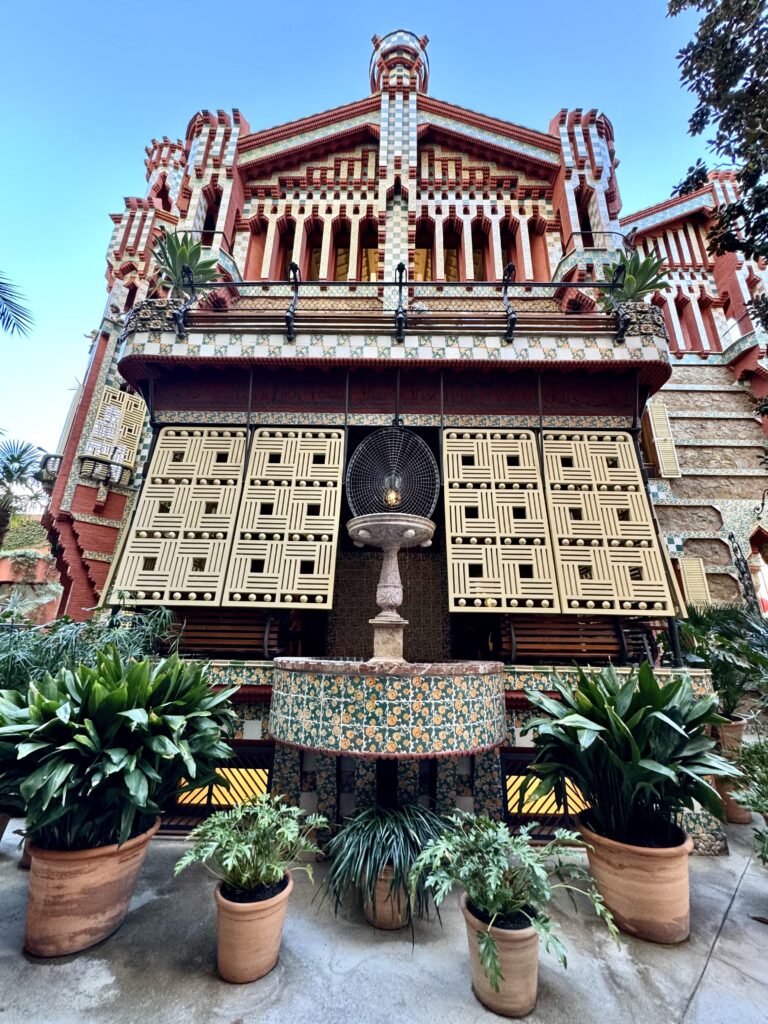
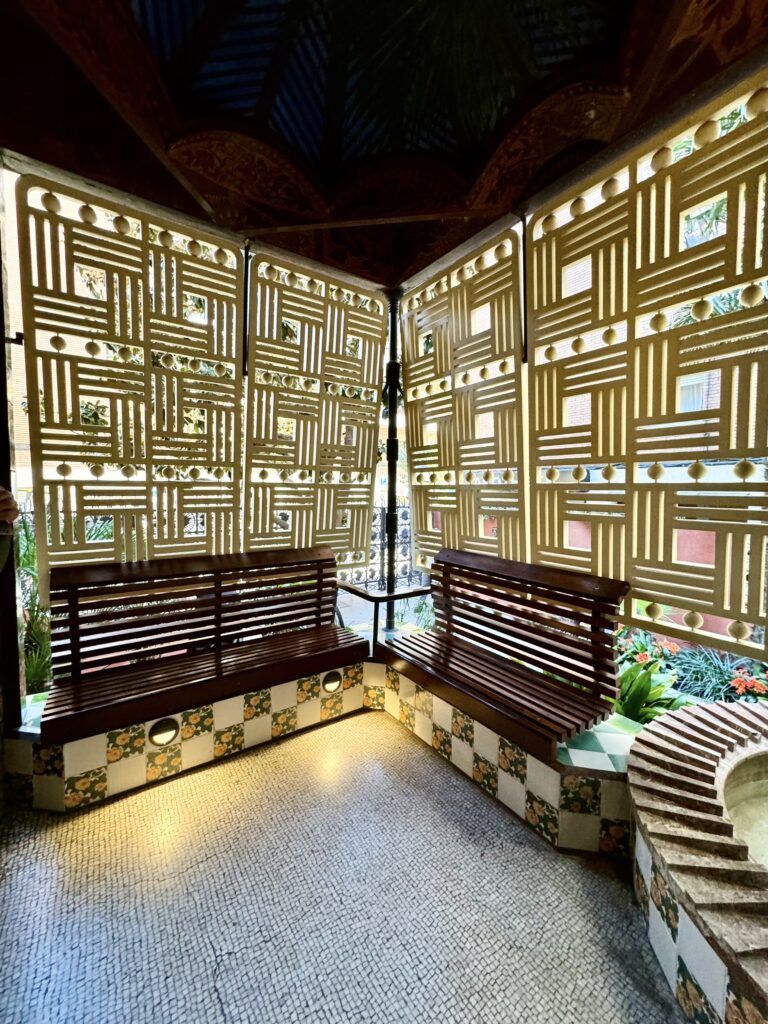
Mini History of Casa Vicens
Casa Vicens is located in the then sleepy village of Gràcia. Gaudí was commissioned by the wealthy industrialist Manuel Vicens i Montaner in 1877.
It was intended to be a summer house, an escape from the city. Now, of course, it’s an arty bohemian district within the city.
Vicens was a tile manufacturer. Gaudí used tiles from his company in the house’s design.
The project almost bankrupted Vicens. But, lucky for him, Gaudí’s design sparked a tile craze and drove work to Vicens, saving his business.
Gaudí began work on Casa Vicens when he was only 31. It was his first residential commission and revealed his budding genius.
Some say Casa Vicens was the “house where it all began,” launching the Modernist Movement in Barcelona.
Gaudi’s Architectural Design
Gaudí had carte blanche to create a distinctive house. It was the first project over which he had full control.
He designed it in a Neo-Moorish or Mudéjar style with some Art Nouveau flourishes.
The finest examples of Mudéjar style are in southern Spain, at Seville’s Royal Alcazar and Granada’s Alhambra. Like those UNESCO sites, Casa Vicens was “meant to evoke a caliph’s pavilion set in an oasis.”
Mudéjar is an architectural style built under Christian rule that commingles both Moorish and Spanish Christian elements.
It’s characterized by horseshoe arches, red brick ornamentation, crenelated arches, delicate plaster latticework, and bright geometric tiled designs.
But Gaudí also wanted to bring nature into Casa Vicens. Gaudí had a lifelong obsession with nature — everything flowed from “the great book of nature.” It was his chief architectural inspiration.
In Casa Vicens, this passion was reflected in his fanciful ornamentation. Casa Vicens is embellished with symbols of flora and fauna.
In 1925, Gaudí was asked to build an addition to the home by Casa Vicens’ new owner. Hard at work on the Sagrada Familia, sleeping in his onsite workshop, Gaudí declined.
He recommended his colleague Joan Baptista Serra de Martínez, who extended the home in perfect harmony with Gaudí’s original work.
Casa Vicens was a private residence until 2014.
It was purchased for an unspecified amount (the asking price was 35 million euros) by the Andorran financial institution MoraBanc.
Based on archival research, Casa Vicens was fully restored and refurbished for over two years to return it to its original state.
To make it accessible to visitors, however, a modern staircase was installed and an elevator added.
In November 2017, Casa Vicens opened for public tours. It’s one of seven properties built by Gaudí in or around Barcelona that were collectively designated a UNESCO site.
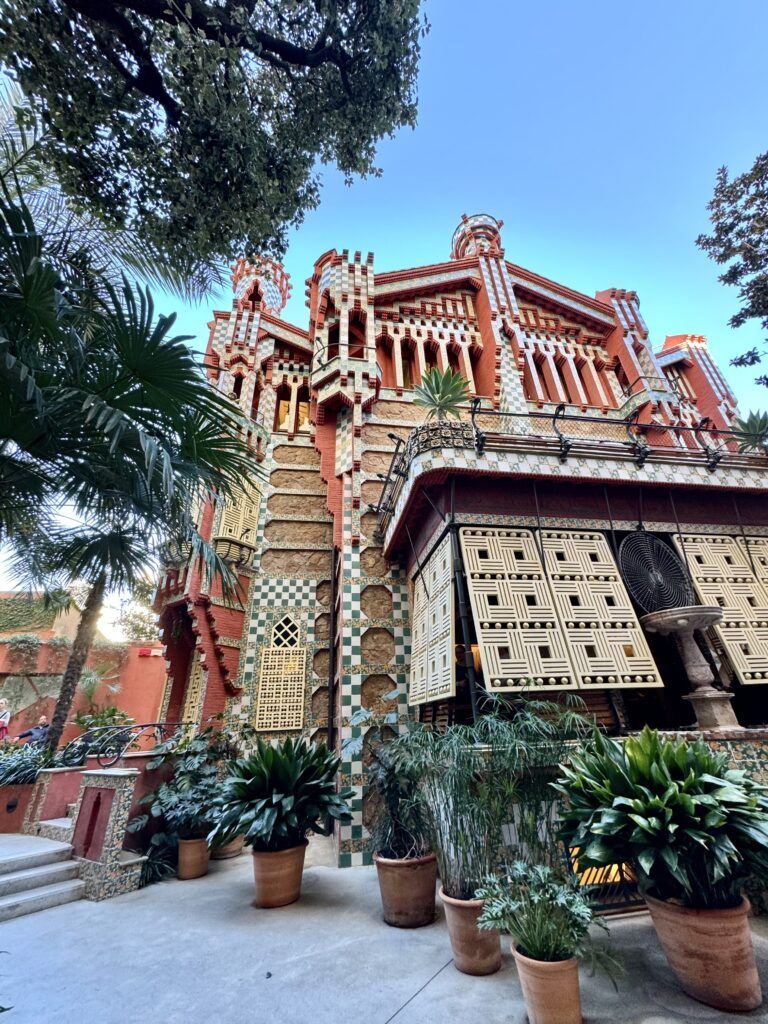
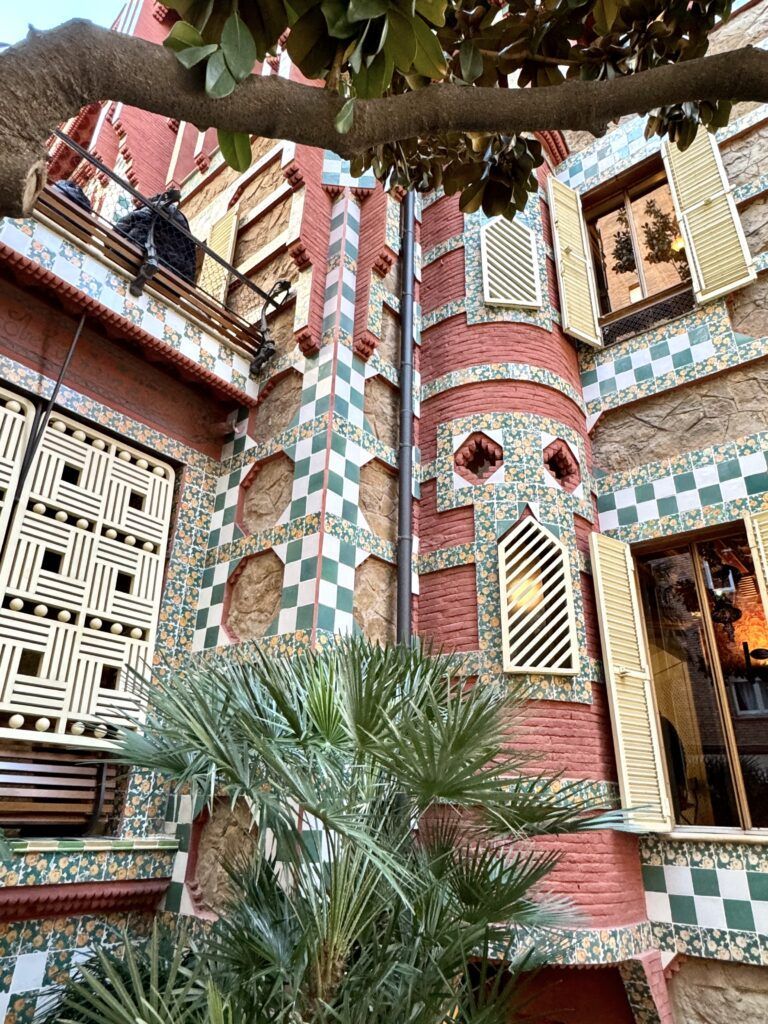
Guide To Casa Vicens: What To See
Now that you’ve had a dose of history, let’s take a closer look at this spectacular Mediterranean themed gem.
Exterior of Casa Vicens
The exterior is a knockout, despite the straight lines.
Gaudí used brick, stone, tile, and iron to build Casa Vicens. Traditional materials, but put together in a spectacular decorative way.
The house’s lower walls are covered in unfinished golden-hued stone. The upper levels are covered with bright red brick. Most of the facade is covered in multi-colored floral tiles, including African marigolds.
When Gaudí visited the site, he was inspired by “little yellow flowers” (marigolds) and “luxuriant fan palms” in the landscape.
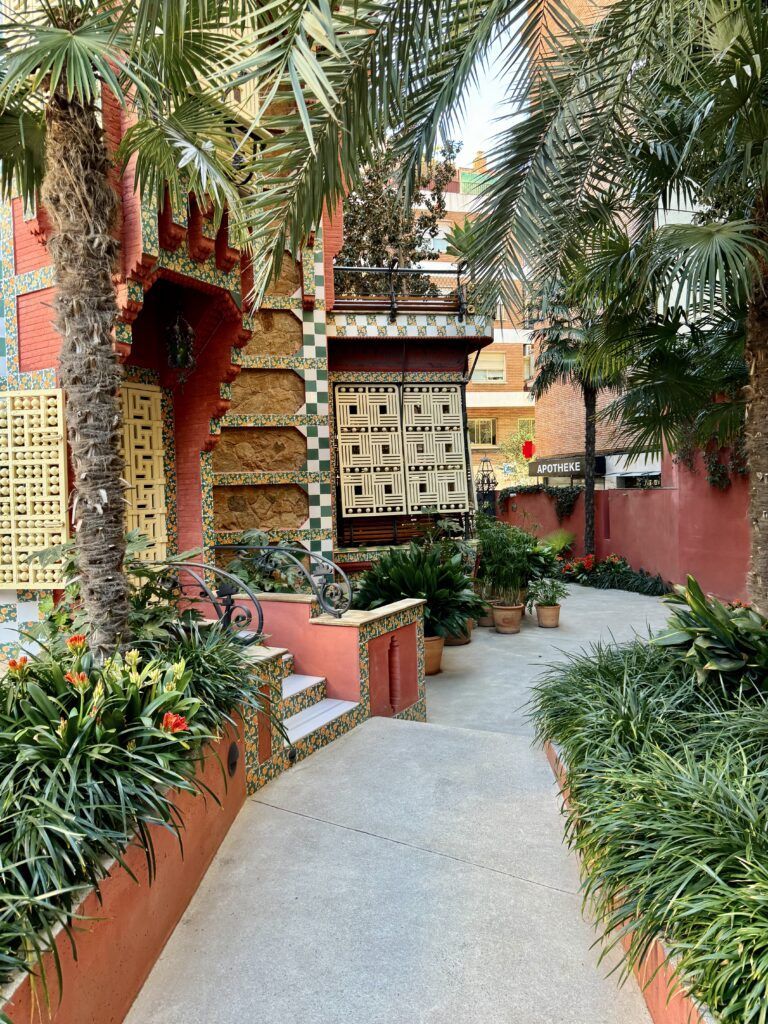
The red brick enhances the colorful green and white tiles, which were intended to represent ivy or lush vegetation growing on the walls.
The cornices are crowned by brightly tiled cupolas modeled on the minarets of Islamic mosques.
The windows are adorned with elaborate ironwork. The spiky iron gate sports palm leaves, mimicking the trees in the garden.
Gaudi thought the natural elements created “a gradual transition between the interior of the house and the natural world outside.”
Casa Vicens’ courtyard leads to a lovely garden. There’s a small fountain, wrapped in marigold tiles. It’s landscaped with palm trees, philodendrons, and other potted plants.
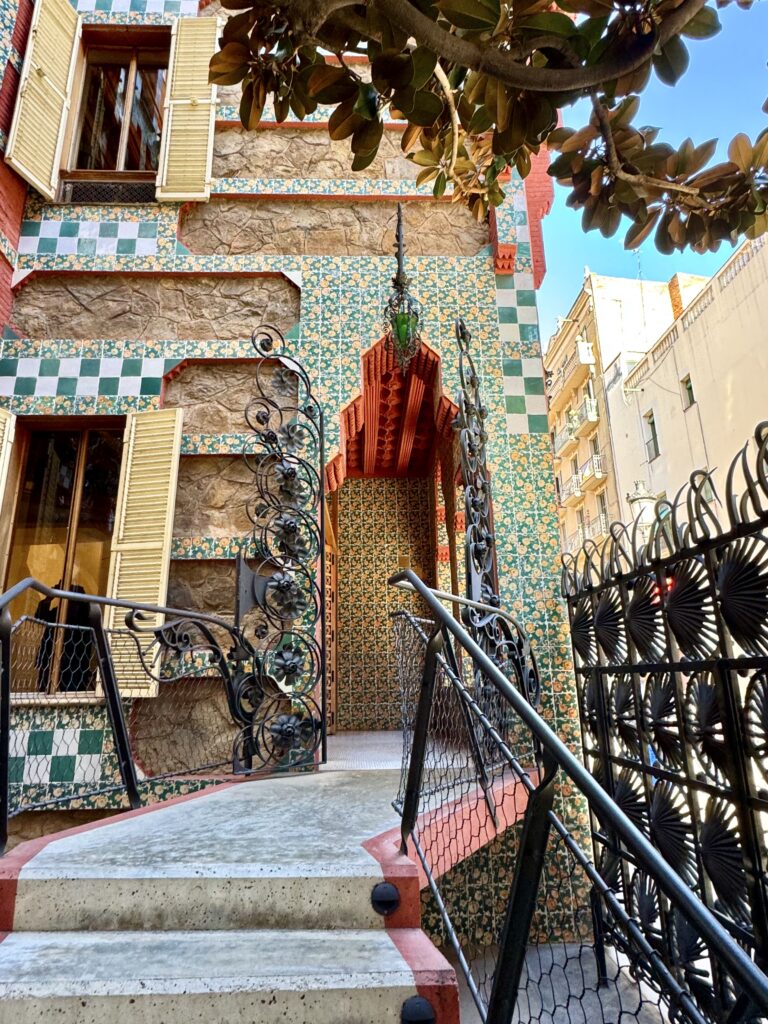
Interior of Casa Vicens
Inside, Casa Vicens is a richly detailed riot of color. The walls are covered with plant, bird, and seashell motifs.
The ceilings and walls are remarkable, decorated with paper mâché plant motifs between the beams.
Each room is different, but repeats the flora and fauna theme. The floors throughout the house are terrazzo.
The building was designed to face the garden, not the street. You will feel as if you’re surrounded by nature, where the interior and exterior are blended.
The main floor consists of the dining room, smoking room, and covered porch.
The bedrooms are on the first floor, full of exuberant leafy decor. The second floor has a display on Casa Vicens’ history.
There are no hallways. The rooms are all connected to maximize the natural light.
The terrace off the main bedroom is lovely. It’s decorated with sunflower tiles and has comfy benches (that you can sit on!), and a fountain.
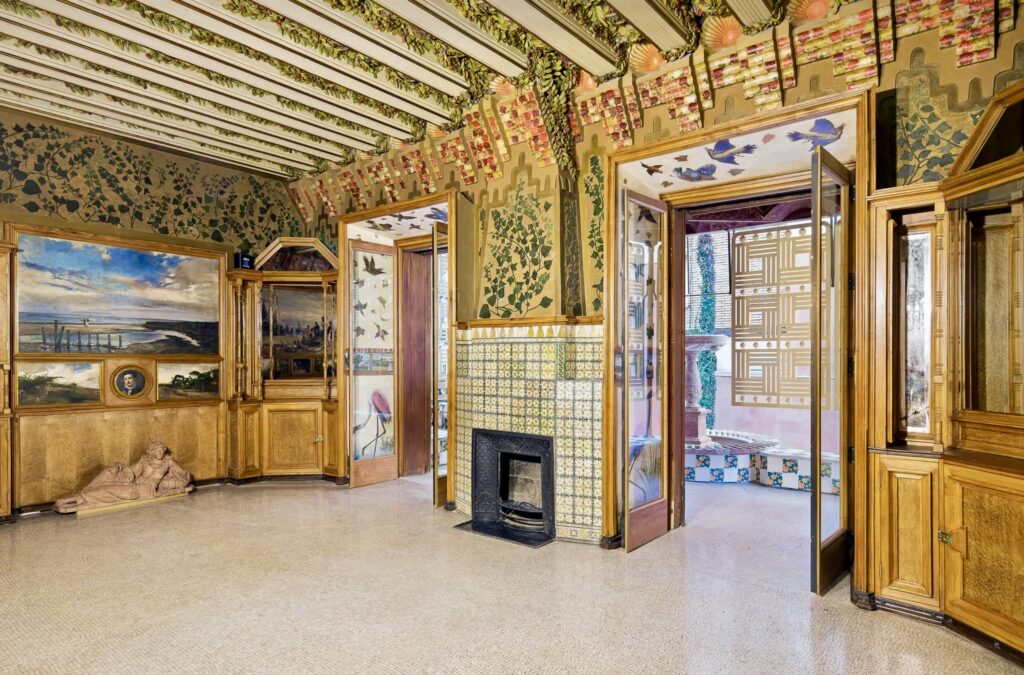
It reminded me of Gaudí’s work on El Capricho in Comillas Spain, which I think of as his sunflower villa.
The dining room is beautiful and elegant. The walls are adorned with hand-painted tiles, wallpaper with nature themes, and landscape paintings.
The ceiling is structured with exposed wooden beams, adding a rustic touch to the room. The beams are paired with vegetal plasterwork that is both intricate and subtle.
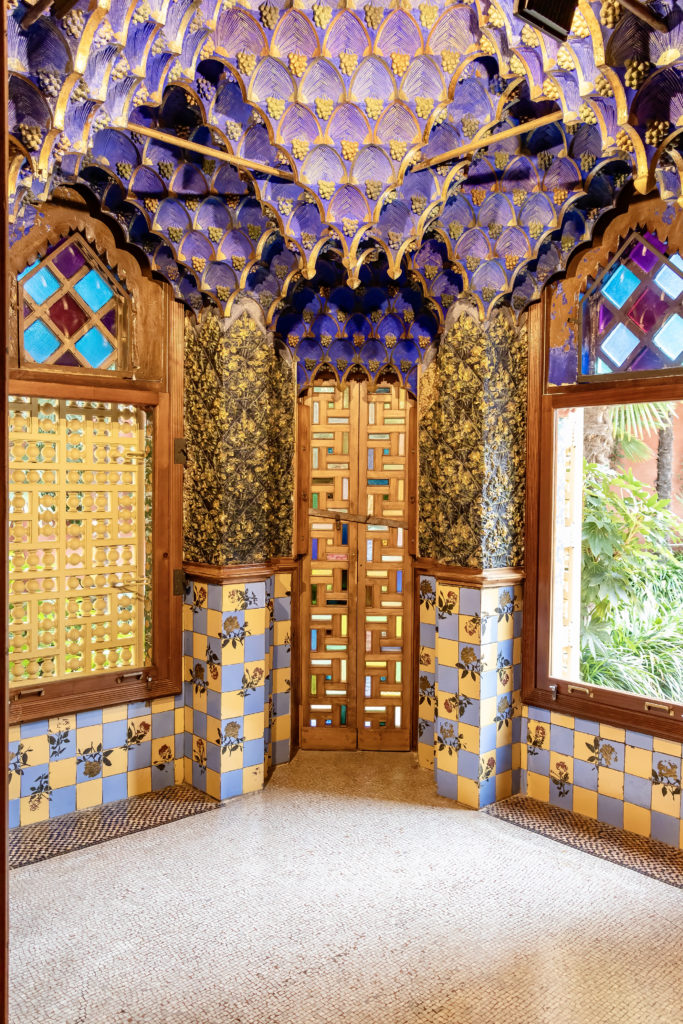
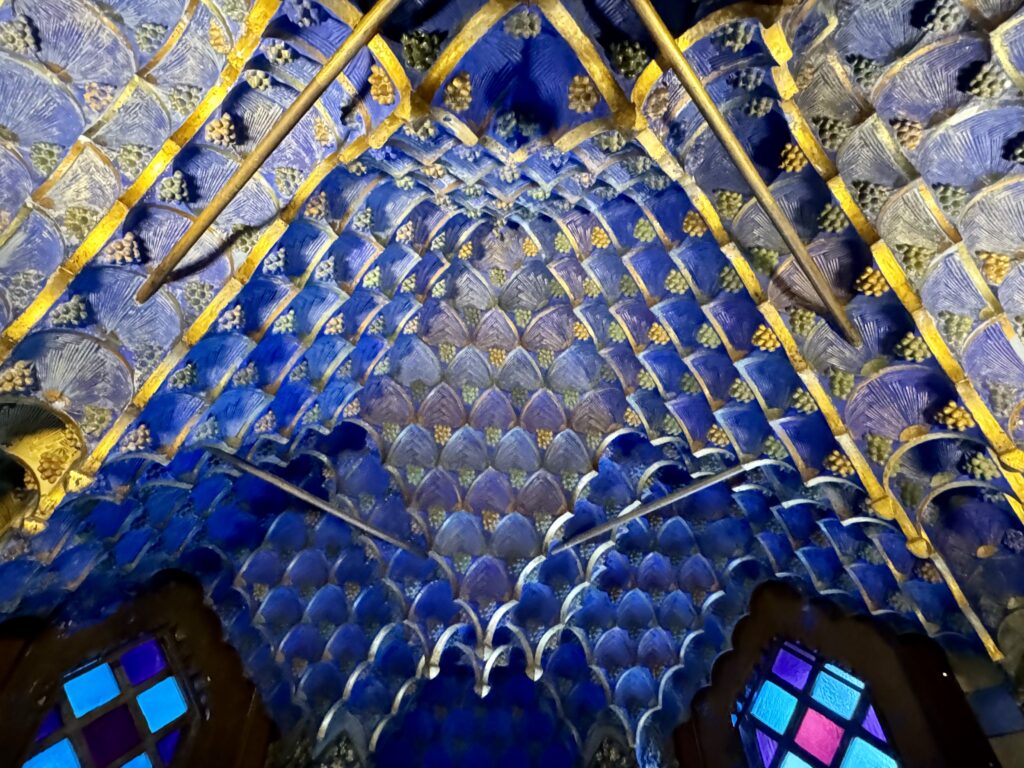
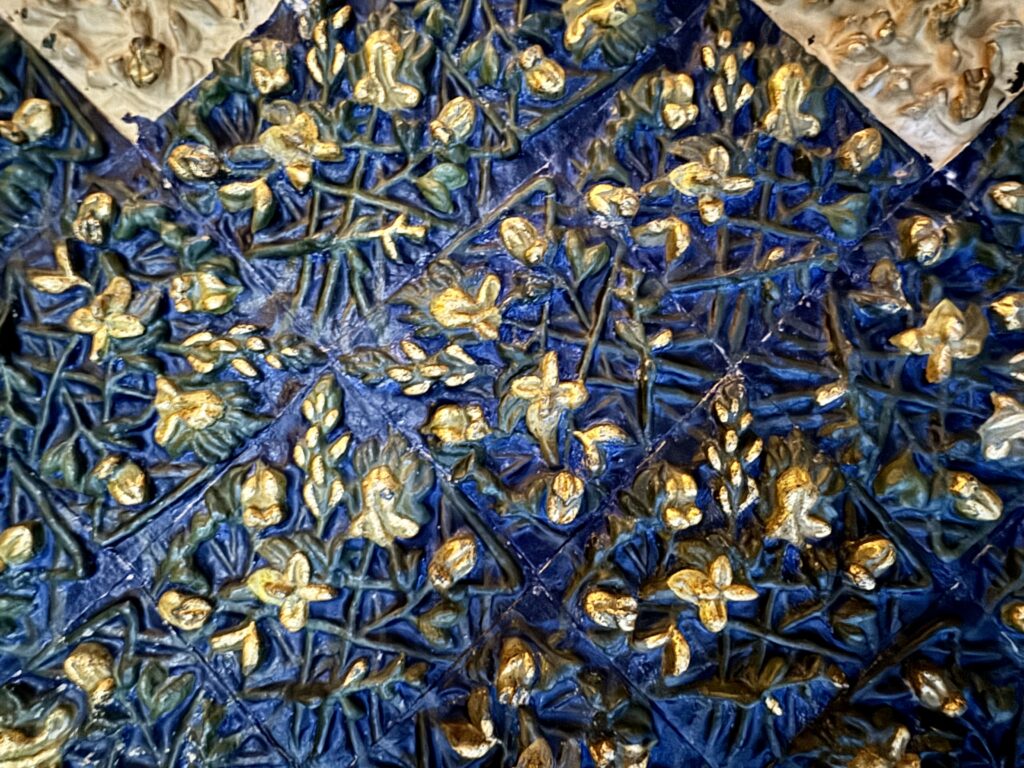
The most challenging room to restore was the domed “smoking room.” The blue ceiling had been painted gold, in a crime against architecture.
Now it’s been restored and is a true oriental oasis, wrapped with blue and gold wainscoting tiles and a ceiling straight from the Alhambra.
The gold Moorish lamps on the ceiling, installed by the former owner, are a beautiful contrast to the dark blue tiles.
Even the bathrooms are bold. You won’t find your typical, white bathrooms here.
Casa Vicens’ bathrooms are done in vivid blue, yellow, red, and white tiles — some checkered and some floral.
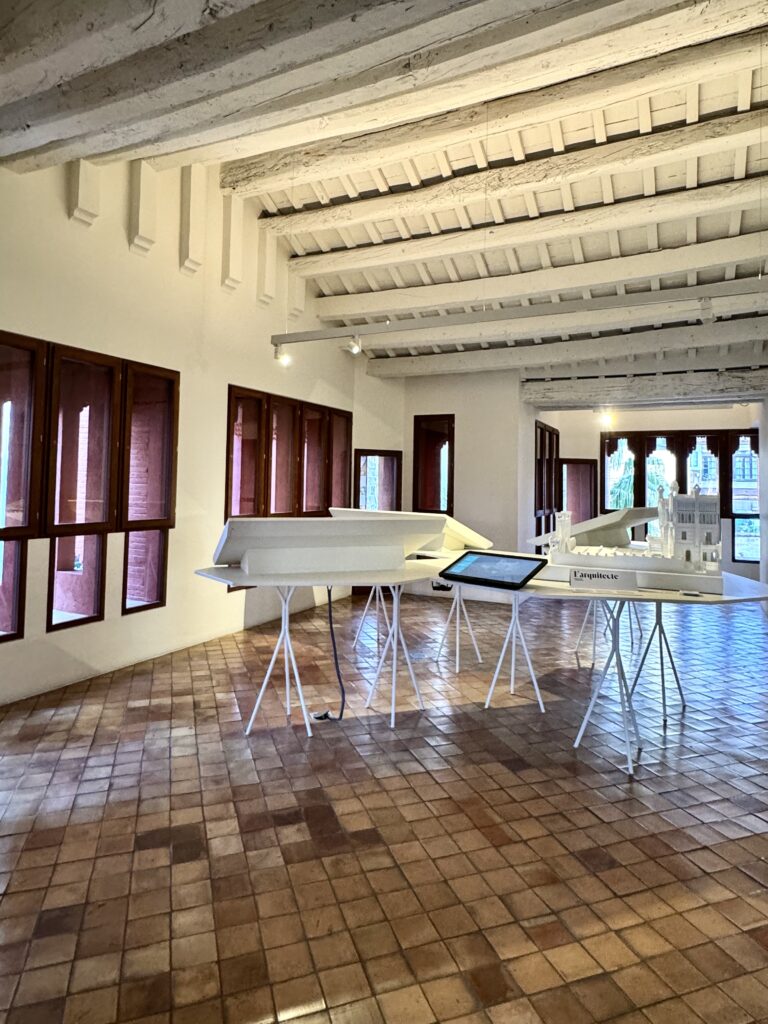
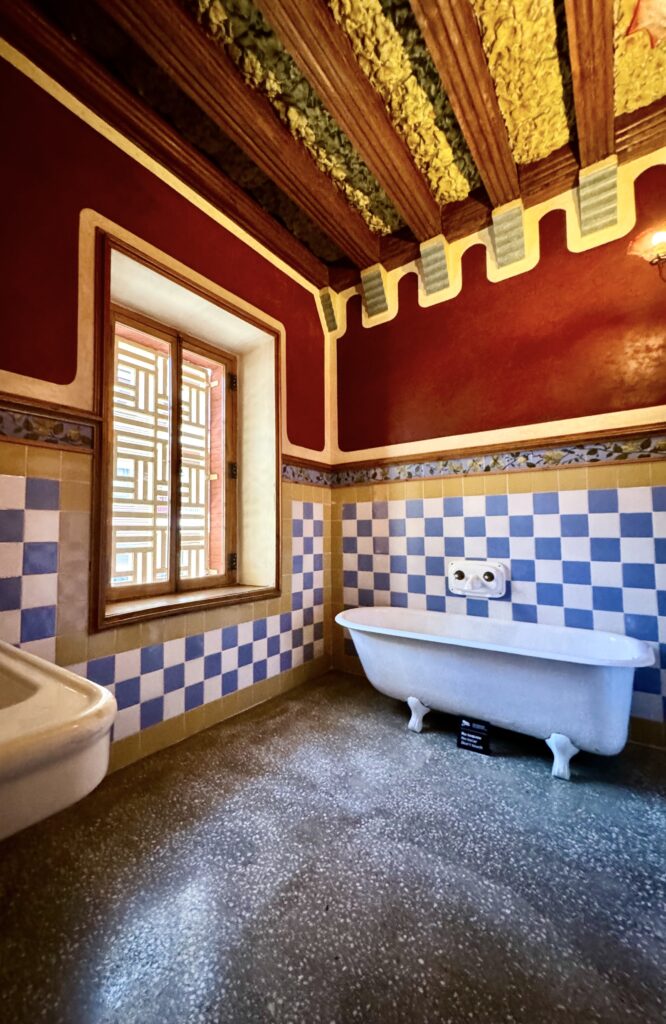
The second floor is now an exhibition space.
You can see models of buildings of Gaudi’s contemporary architects and read about them.
There is rare preserved piece of Gaudi’s writing in which he expounds on the virtues of a country house. And pieces of furniture.
During the renovation, the inner walls and dropped ceilings from prior successive renovations, were removed.
Now, as Gaudí intended, it’s an open space with exposed wood beams and large windows on all three sides.
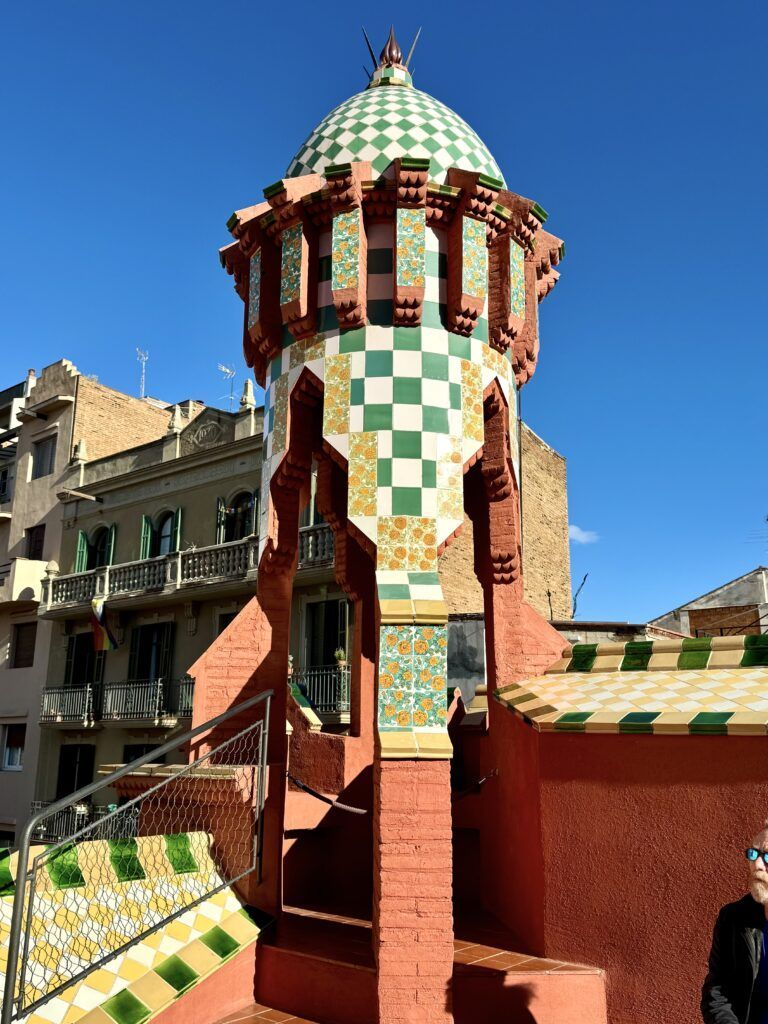
Rooftop
Gaudí loved putting experimental designs on rooftops.
Casa Vicens was his first accessible rooftop. The main tower foreshadows the spectacular designs that would later appear on Gaudí’s Casa Batlló and La Pedrera.
The roof is covered with traditional Catalan tiles and features distinctively shaped chimneys and vents, which are hallmarks of Gaudí’s approach to integrating functional elements with artistic design.
The color palette is consistent with the rest of the building, featuring naturalistic tones that blend with decorative elements inspired by Spanish and Moorish architecture.
And naturally, there are more sunflowers.
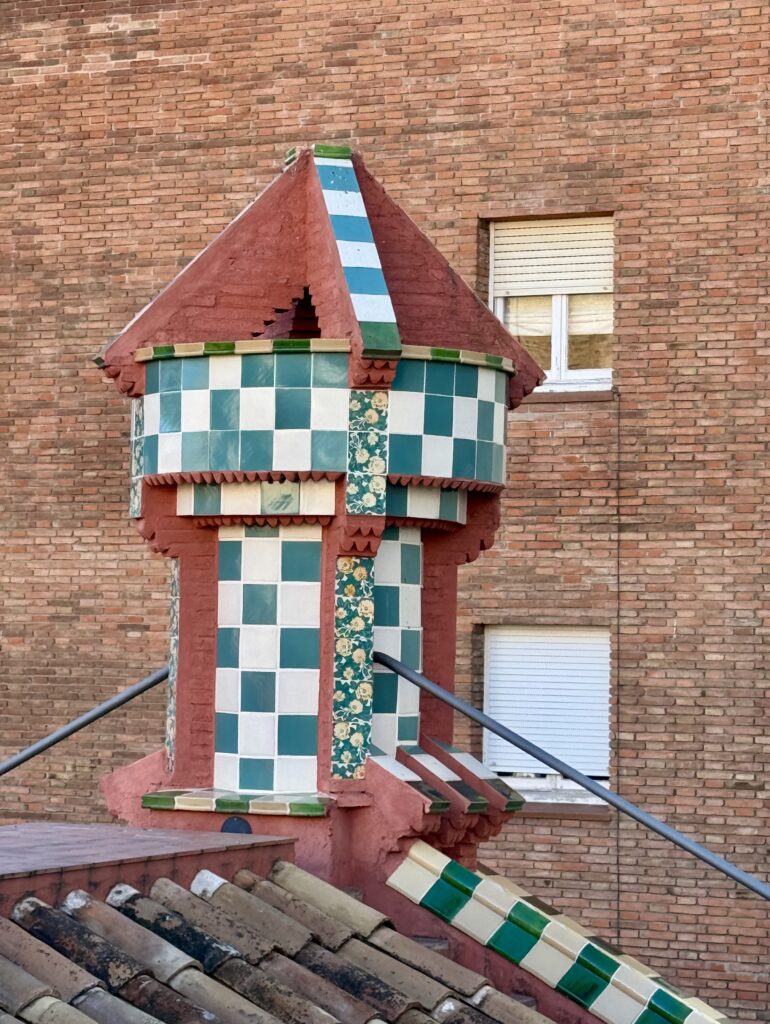
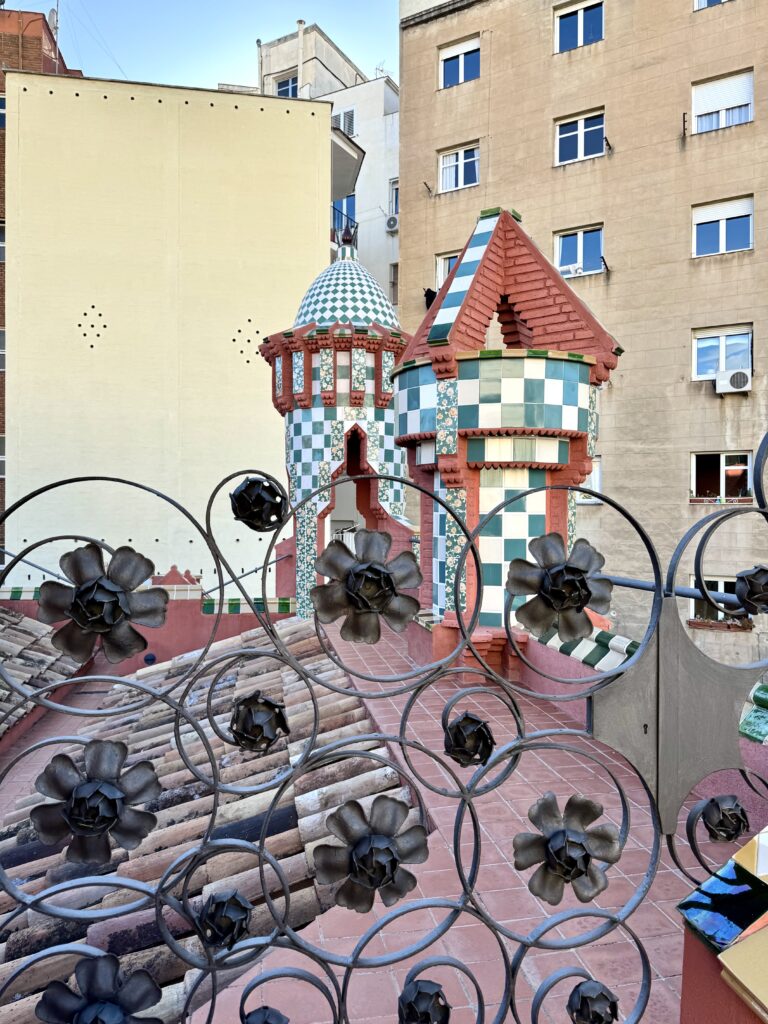
Practical Information and Tips for Visiting Casa Vicens:
Address: Carrer de les Carolines, 18-24, 08012 Barcelona.
If you’re up for a stroll, I suggest walking own the Gran de Gracia to get there. It’s a pleasant walks with shops and architectural gems at every step.
Public Transport Options:
- Metro: Fontana (L3) – 250 m, Lesseps (L3) – 280 m
- FGC: Gràcia (L6, L7, S5, S55, S1, S2) – 500 m
- FGC: Pl. Molina (L7) – 500 m
- FGC: Sant Gervasi (S5, S55, L6) – 450 m
- Bus: lines 22, 27, 32, 87, 114, N4, V17
- Barcelona Bus Turistic: Blue line
- Barcelona City Tour: East Route
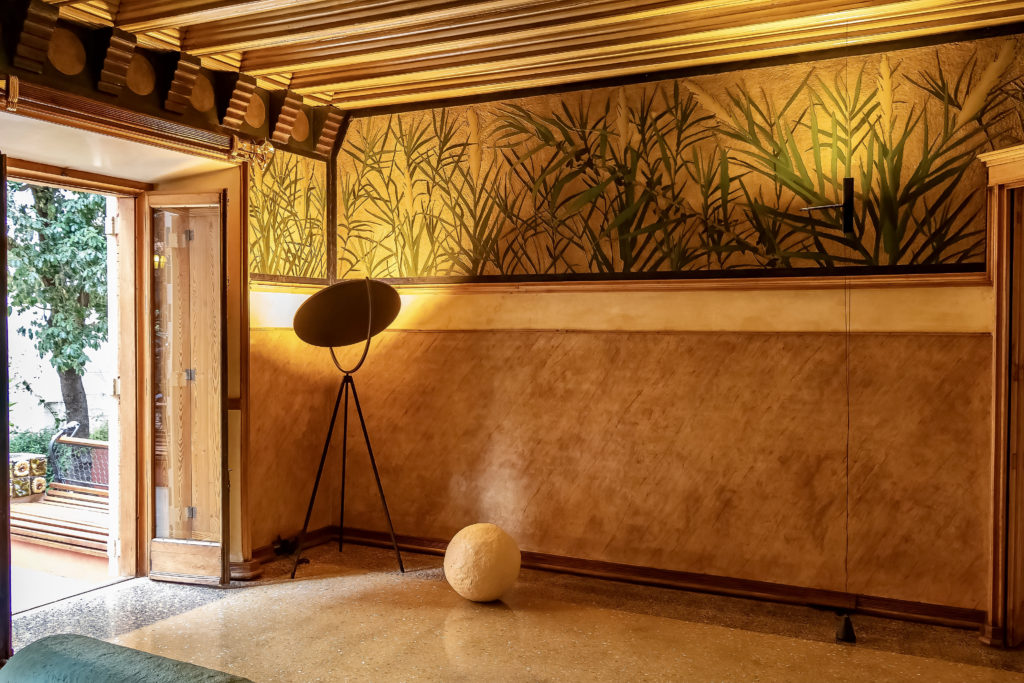
Hours: Open daily Monday to Sunday from 9:30 am to 8:00 pm, last admission 6:40 pm. In the winter, open until 6:00 pm.
Tickets: 21 euros. Entry is free with the Barcelona Pass. There is a discount with the Barcelona Card.
You can scan a QR code for the audio guide. Or you can book a guided tour.
Pro Tip: If you’re hungry, the Hoffman Cafe is at the end of the garden.
You can bring any bags inside of heritage reasons. The bag check is on the left before you get to the entrance.
The balconies on the second floor are closed. You can’t open the shutters and walk out. I did, and I got screamed at by a guard.
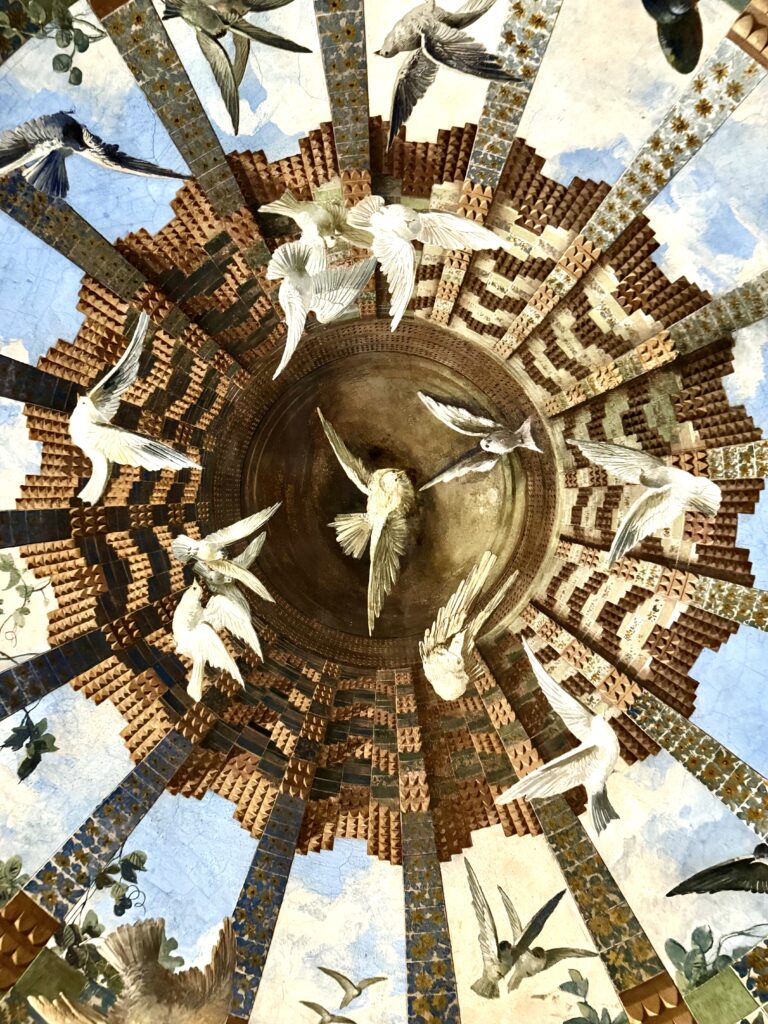
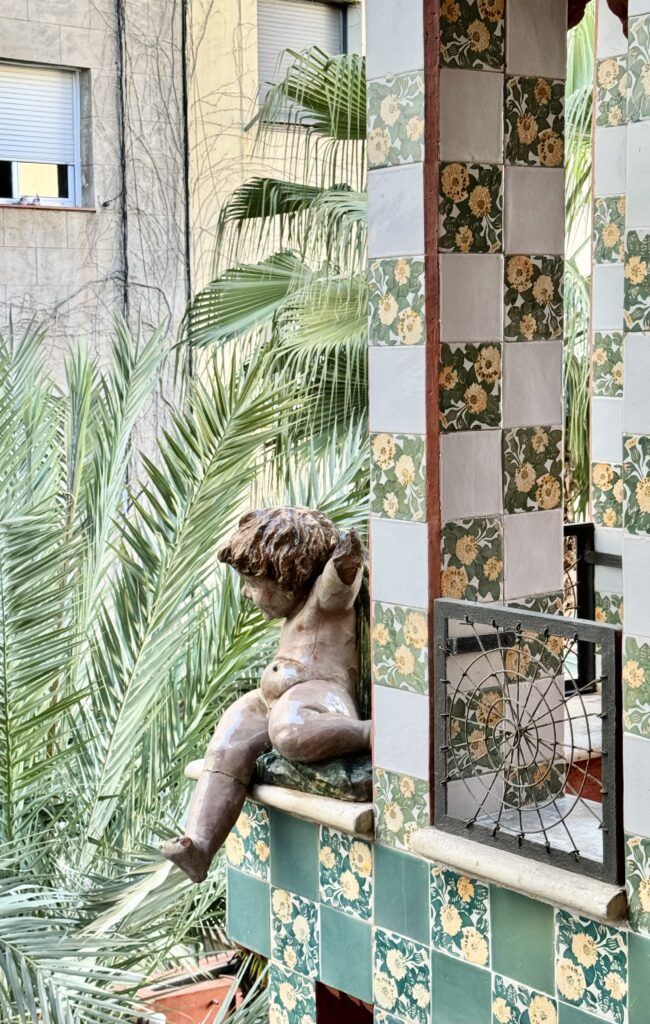
Is Casa Vicens Worth Visiting?
100% yes, especially if you’re on the Gaudi trail and want to understand his career trajectory. This is Gaudi in an earlier mood.
I also thought it was absolutely beautiful and a nice contrast to the other incredibly crowded Gaudi sites.
I hope you’ve enjoyed my guide to Casa Vicens. You may find these other Barcelona travel guides useful:
- 1 day itinerary for Barcelona
- 3 day itinerary for Barcelona
- 40+ Landmarks in Barcelona
- Guide to Sagrada Familia
- Guide to Gaudi Architecture
- Guide to Casa Batllo
- Guide to La Pedrera
- Hidden Gems in Barcelona
- Architecture Lover’s Guide to Example
- Guide to the Gothic Quarter
Pin it or later.

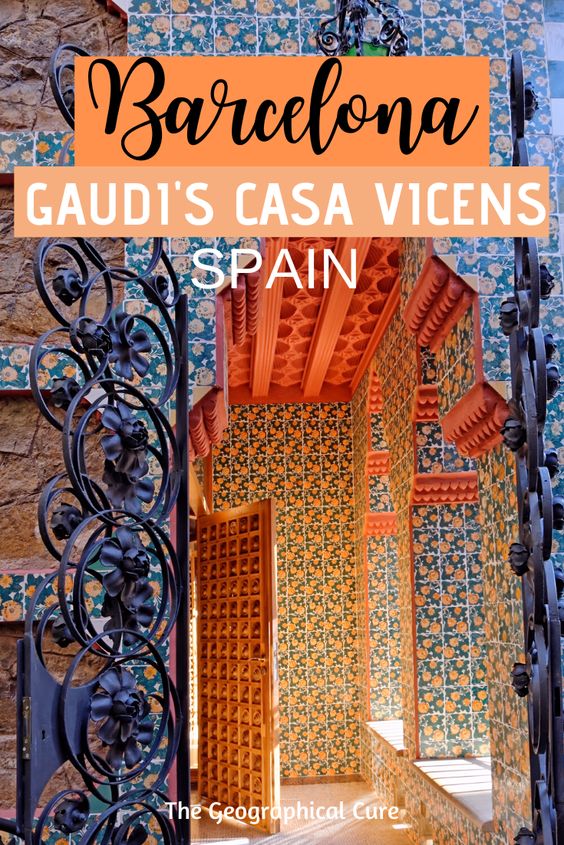
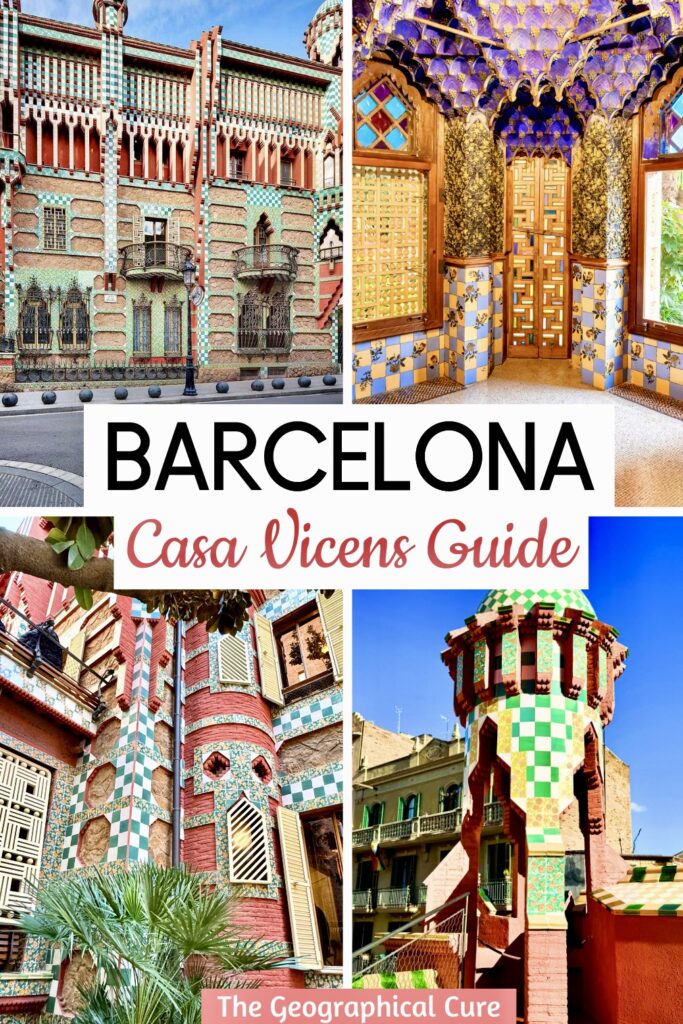
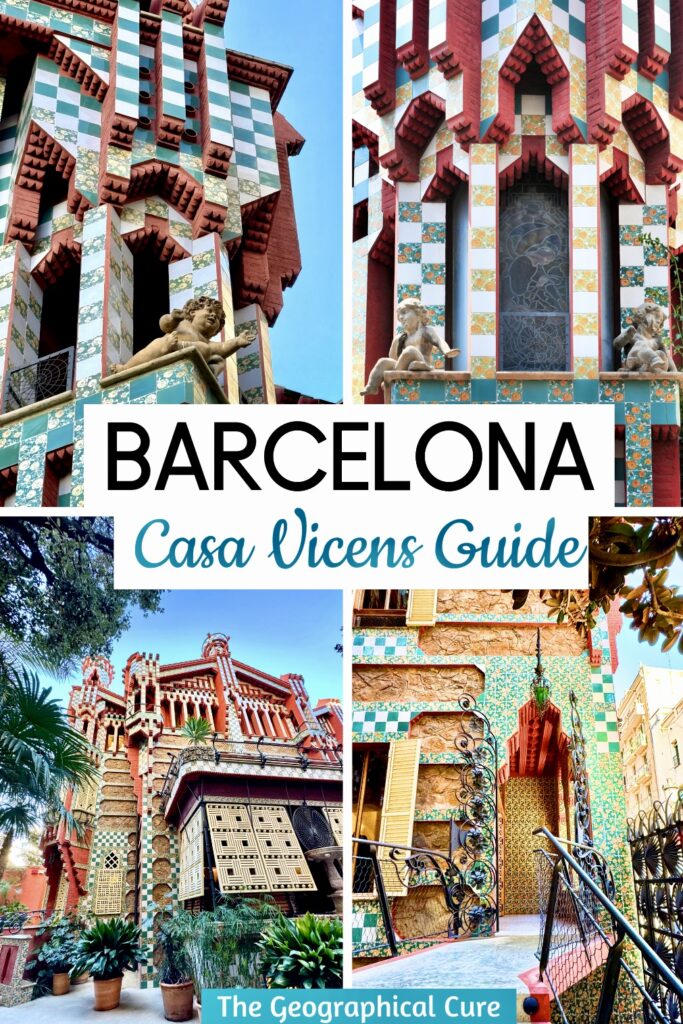
Hi! I am very interested in using your photos in an artbook that I am working on. Would you please contact me at alla@allakazovsky.com
I look forward to hearing from you and thank you in advance for your consideration. Happy New Year!!!
Alla Kazovsky Architect
No, I’m sorry. Many of the photos are stock photos for editorial use only. So they can’t be used for commercial purposes.